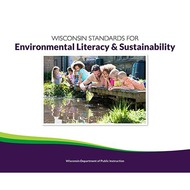Symbiosis in the Soil
(View Complete Item Description)In this project, students will assume the role of citizen scientistshelping researchers answer questions about how dandelions acquire beneficial symbiotic microbes from different soil types. Students will collect and transplant dandelions, conduct experiments on dandelion growth and microbe growth, and then submit data to scientists at the Genomics and Microbiology Research Lab at the North Carolina Museum of Natural Sciences. The researchers will use these data to supplement DNA and RNA sequencing efforts. Students will receive results from the genetic analyses from a limited set of classrooms whose dandelions had previously been sequenced. By maintaining a connection with researchers, students will have an active, hands-on role in current science. Besides aiding scientists with research, students will also create their own inquiries.
Material Type: Lesson Plan




















